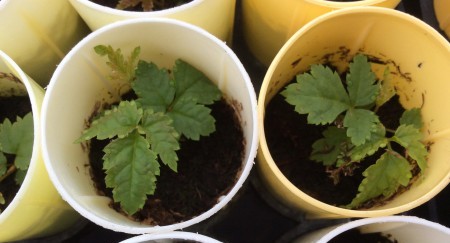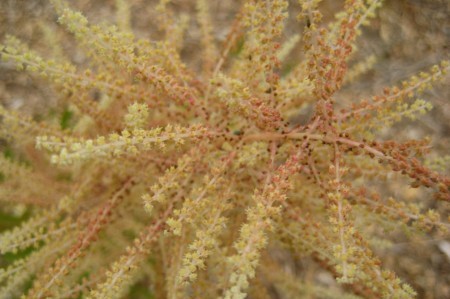Goatsbeard
Every month, Native Plant Nursery Manager Bridget McNassar shares information about one of the plants she and her team propagate in the nursery. This month’s species: Goatsbeard.
This herbaceous member of the rose family (Aruncus dioicus) is one of my very favorites, hardy and requiring little care, providing stunning blooms in shady areas, and also loved by wildlife. As they die completely back in the winter, I find myself impatiently watching the spots where their root crowns lie in the spring, and thoroughly enjoy their emergence and yearly growth into a 3-6 foot (!!) plant.
Beginning with their lovely, fern-like foliage, goatsbeard grows rapidly, beginning in mid-to-late spring. They often have pretty, pinkish-red stems, adding a bit of color to the riot of spring greens. Blooms show themselves in June, graceful, large sprays of many tiny white flowers supported on erect stems. This species is dioecious, which means that there are male and female plants. If you look closely with a hand lens at the individual flowers, you will either see many stamens (indicating a male) or just three stigmas attached to what will become the seed follicles (a female plant). Because of the multiple stamens, male flowers often appear a bit fuzzier, but both are equally gorgeous, and you will also likely see hummingbirds, butterflies and bumblebees visiting both blooms. After the flowers have bloomed, the female plants droop a little more, due to the weight of their seedheads, which remain on the plants through fall and winter and provide forage for birds.
Goatsbeard is found in the wild in moist shady forests, often along roads, trails or streams, and thus likes to be in at least partial shade and moist soils. I often see them along some of the backroads near Oxbow. In a human-crafted landscape, they can really brighten up a shady area, and look stunning under tall trees, behind lower shade perennials. We will have a crop of goatsbeard on hand this fall, stay tuned!


